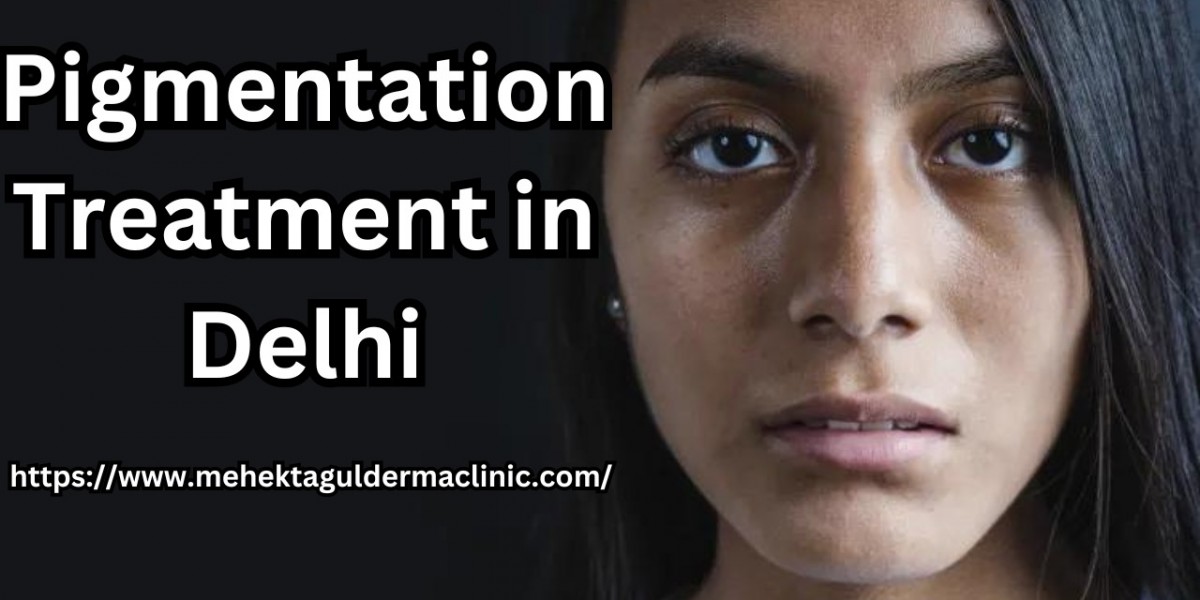Skin pigmentation disorders affect both the color and tone of the skin. The body pigment known as melanin controls the color of the skin, hair, and eyes. The term "pigmentation" describes the darkening of the skin. In severe situations, it may appear on the arms and forearms in addition to the face, neck, and shoulders. Although it can occur in fair-skinned people as well, it is more frequently observed in those with darker skin. A multitude of factors can cause pigmentation, from exposure to the sun to genetic disorders like tuberous sclerosis. In other words, it is a skin tone darkening caused by an increase in the amount of melanin in the skin.
In this article, we will explore the different types of pigmentation and the common treatment options. To make this post informative, we have gathered insights from Dr. Gulhima Arora and Dr. Sandeep Arora, well-known dermatologists for pigmentation treatment in Delhi. Continue reading to learn.
Different Types of Pigmentation Issues:
Pigment disorders can be broad, affecting many different areas of the skin, or localized, affecting only a small portion of the skin. Their effects on pigmentation are known as:
- Depigmentation: The total loss of pigment is referred to as depigmentation. In this, the skin color appears white.
Example: There is widespread depigmentation in vitiligo. While the exact cause of vitiligo, a pigmentation disorder of the skin, is unknown, it could be immune system-mediated destruction of melanocytes, the cells that produce the pigment melanin. Vitiligo can strike a person suddenly or run in families. A number of different illnesses can co-occur with vitiligo.
- Hypopigmentation: Hypopigmentation is the term for abnormally low levels of melanin. The skin tone is less pigmented than normal. Hypopigmentation can be brought on by a history of skin damage, such as blisters, ulcerations, burns, chemical exposure, infections, inflammatory skin conditions, etc.
- Example: Albinism is a genetic abnormality that affects individuals worldwide and across all ethnicities. It affects the eyes, the skin's hypo- or depigmentation, and involuntary eye movements.
- Hyperpigmentation: An excessively high amount of melanin is usually the cause of hyperpigmentation, though deposits of other pigmented substances that are not normally present in the skin can occasionally cause the condition. Hyperpigmentation can result from drugs, sunlight exposure, or conditions that cause inflammation. Hyperpigmentation manifests itself in melasma, liver spots, sun spots, age spots, and dark lips, among other places.
Treatments For Skin Pigmentation
Multiple cosmetic procedures can aid in skin lightening and minimizing the appearance of hyperpigmentation. These cosmetic procedures have been shown to be successful in addressing various pigmentation problems.
- Laser Toning Treatment
It is effective on all pigmentations, including flat birthmarks, freckles, age spots, and sun spots. The black pigment is broken down by the laser beam that is directed at that particular region. The skin in the vicinity is unaffected by this. Multiple sessions will be necessary, depending on the type of pigmentation and the laser being utilized. This procedure can assist in removing pigmentation without leaving scars. Since the laser treatment encourages collagen formation, one can anticipate long-lasting results.
- Chemical Peels
The preferred form of treatment for mild to severe pigmentation issues has been chemical peels. Depending on a specific patient's needs, the skin specialist employs glycolic acid peels, salicylic acid peels, and trichloroacetic peels (TCA). Glycolic acid is an effective alpha hydroxy acid for treating superficial pigmentation. On the other hand, a salicylic acid peel can effectively address hyperpigmentation brought on by post-inflammatory conditions, hormone imbalances, and UV damage. Since the TCA peel penetrates more profoundly than any other peel, it is employed when the pigmentation is well ingrained. Each of these peels works by removing the top layer of dead and undesirable skin. As a result, in addition to helping with pigmentation concerns, these peels also promote smooth, even skin tone.
- Microdermabrasion
Mild pigmentation can be effectively treated with this procedure. Removing the epidermis, the top layer of skin, uses the skin exfoliation technique. This activates the body's natural healing process and encourages skin renewal by accelerating cell turnover. The new skin appears smoother and lighter. Results are immediately apparent and continue to improve for up to a few weeks.
- Dermabrasion
In comparison to microdermabrasion, dermabrasion offers faster results. In order to reduce discomfort, a numbing cream is typically applied prior to the procedure. During the procedure, a handheld tool with a wire brush is moved gently over the target skin area. The procedure will leave the skin red and swollen. The skin on the treated area will eventually shed as a scab or crust. The skin will be clear and radiant after healing. To ensure a quick recovery and the best outcomes, it is essential to adhere to the doctor's recommendations.
- Intense Pulse Light
Sun spots, age spots, redness (rosacea), varicose veins, and broken capillaries can all be effectively treated with this procedure, which is also referred to as IPL therapy, photofacial therapy, or photorejuvenation. This helps to improve the texture and tone of the skin. For those with lighter skin tones, this is the preferred technique of therapy.
The pigmentation treatment cost in Delhi, or any other city, depends on various factors such as the type of treatment done, the area to be treated, the number of sessions needed, the doctor's qualifications, the clinic's location, and many more.
Extra Cautionary Advice
The necessity of a daily skincare regimen stems from the prevalence of pigmentation. The skin experts advise the following measures:
- The skin will be shielded from the sun if one uses a sunscreen with an SPF of 30 or higher. By doing this, skin discoloration and hyperpigmentation are avoided.
- One must refrain from picking at scabs, patches, and acne in order to prevent hyperpigmentation following an accident.
- A variety of topically applied creams contain retinoids, corticosteroids, vitamin C, and kojic acid.
Conclusion
It is advised to seek the advice of a skilled dermatologist if excess pigmentation persists despite trying a variety of treatments. If one is looking for the best skin clinic in Delhi, they may visit Mehektagul Dermaclinic and consult with the renowned dermatologists, Dr. Gulhima Arora and Dr. Sandeep Arora. Before deciding on a course of action, the doctor prioritises determining the underlying reason for the skin pigmentation. At the renowned








